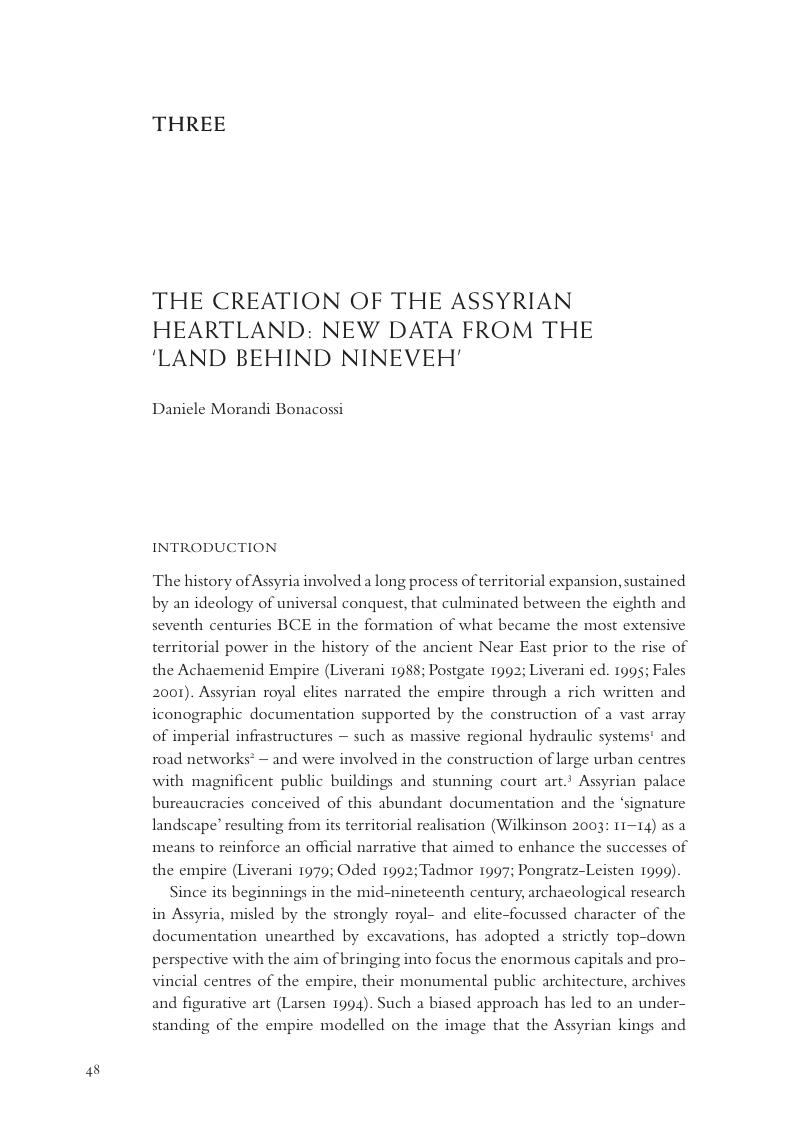 The Archaeology of Imperial Landscapes
The Archaeology of Imperial Landscapes Book contents
- The Archaeology of Imperial Landscapes
- The Archaeology of Imperial Landscapes
- Copyright page
- Dedication
- Contents
- Figures
- Tables
- Contributors
- Additional material
- One Ancient Empires on the Ground
- I The Transformation of Rural Societies and Landscapes
- Two Engineering Empire
- Three The Creation of the Assyrian Heartland
- Four Pioneers of the Western Desert
- Five Power at a Distance
- Six Early Roman Colonisation beyond the Romanising Agrotown
- II The Transformation of Peripheral Societies and Landscapes
- III Comparing Repertoires of Rule in Rural and Peripheral Regions
- Index
- References
Three - The Creation of the Assyrian Heartland
New Data from the ‘Land behind Nineveh’
from I - The Transformation of Rural Societies and Landscapes
Published online by Cambridge University Press: 04 April 2018
- The Archaeology of Imperial Landscapes
- The Archaeology of Imperial Landscapes
- Copyright page
- Dedication
- Contents
- Figures
- Tables
- Contributors
- Additional material
- One Ancient Empires on the Ground
- I The Transformation of Rural Societies and Landscapes
- Two Engineering Empire
- Three The Creation of the Assyrian Heartland
- Four Pioneers of the Western Desert
- Five Power at a Distance
- Six Early Roman Colonisation beyond the Romanising Agrotown
- II The Transformation of Peripheral Societies and Landscapes
- III Comparing Repertoires of Rule in Rural and Peripheral Regions
- Index
- References
Summary

- Type
- Chapter
- Information
- The Archaeology of Imperial LandscapesA Comparative Study of Empires in the Ancient Near East and Mediterranean World, pp. 48 - 85Publisher: Cambridge University PressPrint publication year: 2018
References
- 2
- Cited by


